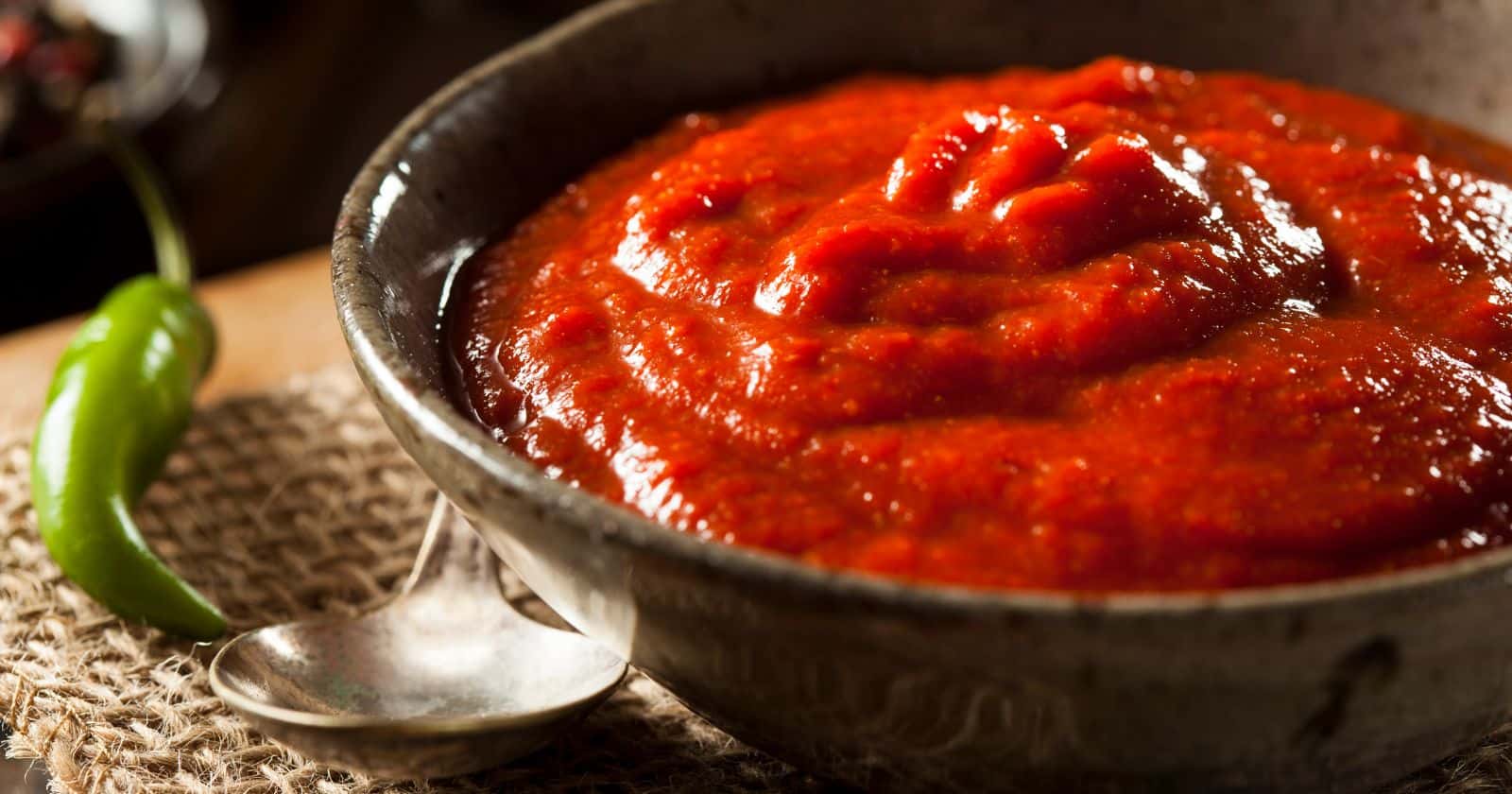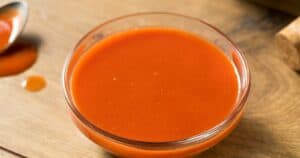Has your artisanal hot sauce ever separated into odd layers in the bottle? Those distinct stripes of oil,
Separation happens because of the combination of liquids and solids that make up hot sauce. The vinegar and oils naturally want to split apart. And the chili flakes and spices sink or float in the liquid at different speeds. There are tips and tricks to prevent separation and keep your hot sauce blended.
In this article, I’ll explain exactly why separation happens in hot sauces and how to fix it. You’ll learn the science behind emulsions and get my best tips for combining ingredients for a smooth, uniform sauce. I’ll also share storage secrets for keeping your hot sauce mixed once it’s bottled. Armed with this knowledge, you can troubleshoot separating sauces and keep that homemade hot sauce looking as delicious as it tastes.
Why Separation Happens
Hot sauce is an emulsion – a mixture of liquids that normally don’t blend well together. The main reasons for separation are:
Oil and Vinegar
Oil and vinegar want to naturally separate from each other. No matter how well you blend them, they resist staying emulsified.
Solids in Liquid
Spices, chili flakes, and other solid particles settle on the bottom while the vinegar rises. Their densities don’t allow even dispersing.
Temperature Changes
Heat and cold can cause separation over time. The sauce separates during storage as temperatures fluctuate.
Preventing Separation
Luckily, we can use science to force those ingredients to blend:
Binding Agents
Adding a stabilizer or thickener helps bind the liquids. Two good options are:
- Xanthan gum – Just 1/4 to 1/2 tsp per cup of liquid binds sauces. It won’t thicken or change texture.
- Guar gum – Use 1/2 tsp per cup of liquid to stabilize with minimal thickness.
Emulsification
Vigorously blending the oil and vinegar together creates an emulsified base for your sauce. Use an immersion blender or food processor. Blend for at least 2 full minutes.
Mesh Strainer
Pouring the sauce through a mesh strainer catches any
Proper Storage
Store hot sauce in a cool, dark place. Fridge temperatures help slow separation. Keep away from heat and sunlight.
Troubleshooting Separated Sauce
If your hot sauce still separates, try these troubleshooting tips:
- Remix – Shake the bottle vigorously to recombine, then store properly going forward.
- Re-blend – Pour into a blender and mix again until uniform.
- Sieve and remix – Push through a mesh sieve to catch solids, then shake bottle to remix.
- Add more binder – Stir in a bit more xanthan or guar gum if needed.
- Heat and freeze – Gently heat to combine, then freeze sauce to set emulsion.
- Accept separation – If all else fails, shake before each use and enjoy the flavor.
Understanding Emulsions
To really grasp how hot sauce separation happens, it helps to understand emulsions:
What is an Emulsion?
An emulsion is a mixture of two liquids that normally don’t mix well. Examples are oil and vinegar or water and fats.
How Emulsions Work
One liquid forms tiny droplets that disperse in the other liquid. Vigorous blending breaks the droplets into tinier bits, creating an emulsion.
Emulsion Instability
The two liquids still want to separate. They need an emulsifier to bind together and prevent splitting.
Common Emulsifiers
Here are the emulsifiers that help hold hot sauce together:
- Mustard – The mustard proteins bind the liquids.
- Honey – Honey is a natural emulsifier due to its composition.
- Egg yolk – Lecithin in the yolk acts as an emulsifier.
- Xanthan & Guar Gum – These stabilize emulsions without thickening.
- Soy Lecithin – This is an extracted emulsifier available as a powder.
Troubleshooting Emulsion Breakdown
If your emulsion breaks down, here are some tips:
- Add more emulsifier
- Blend again to disperse evenly
- Switch to a stronger emulsifier like xanthan gum
- Accept some separation and shake before using
Frequently Asked Questions
Still have some questions about hot sauce separation? Here are answers to some common FAQs:
Q: How can I tell if my hot sauce has separated in the bottle?
A: Check the bottle closely. You’ll see distinct layers of oil, spices, and vinegar instead of a uniform mix. The solids may settle at the bottom.
Q: Is it safe to eat separated hot sauce?
A: Yes, separated hot sauce is still safe to eat! The flavor and quality isn’t affected. Just make sure to shake the bottle before each use.
Q: Can I remix separated hot sauce by shaking and storing upside down?
A: Shaking will temporarily remix the layers, but it will eventually separate again during storage. Storing upside down helps prevent solids from settling on the bottom.
Q: Why does my hot sauce separate in the fridge but not at room temp?
A: Fridge temperatures actually cause ingredients to separate more over time. Storing at room temp helps keep the emulsion stable for longer.
Q: Should I add xanthan gum to all my homemade hot sauce recipes?
A: It’s a good idea to add a small amount of xanthan gum to any homemade hot sauce to help prevent separation. Start with 1/4 tsp per cup of sauce.
So in summary, getting a homemade hot sauce recipe to emulsify properly takes some work. But understanding separation causes, emulsion science, and troubleshooting tricks will set you up for success!





